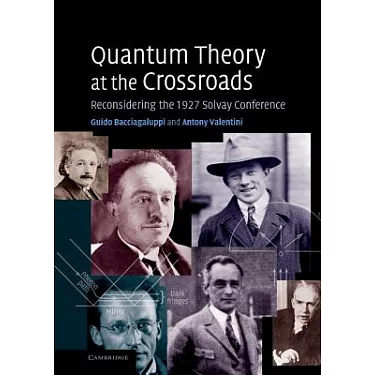1927 Solvay Conference.

29為與會者中有17位諾貝爾獎得主。
The Solvay Conferences have been devoted to preeminent unsolved problems in both physics and chemistry. They began with the historic invitation-only 1911 Solvay Conference on Physics, considered a turning point in the world of physics, and are ongoing.
The most famous conference was the fifth Solvay Conference on Physics, which was held from 24 to 29 October 1927. The subject was Electrons and Photons and the world's most notable physicists met to discuss the newly formulated quantum theory. The leading figures were Albert Einstein and Niels Bohr. Seventeen of the 29 attendees were or became Nobel Prize winners, including Marie Curie who, alone among them, had won Nobel Prizes in two separate scientific disciplines. The anti-German prejudice that had prevented Einstein and others from attending the Solvay conferences held after the First World War had melted away. Essentially all of those names who had contributed to the recent development of the quantum theory were at this Solvay Conference, including Bohr, Born, de Broglie, Dirac, Heisenberg, Pauli and Schrodinger. Heisenberg commented:
"Through the possibility of exchange between the representatives of different lines of research, this conference has contributed extraordinarily to the clarification of the physical foundations of the quantum theory. It forms, so to speak, the outward completion of the quantum theory."
1927年會議主席是, Hendrik Lorentz (Leiden)。
最近一次索爾維會議是2023年,主題是 The Structure and Dynamics of Disordered Systems,這也是1911年至今第29次會議,平均3-4年舉辦一次。

比利時大實業家索爾維(Ernest Solvay, 1838-1922)小諾貝爾五歲,他們兩人有許多共同點:本身都是化學家,都靠發明而致富,也都將財富捐出推動科學的發展。惟諾貝爾獎設立至今婦孺皆知,知道索爾維會議的人卻相當有限。
索爾維相信頂尖的科學家若能齊聚一堂,探討最新的科學發現與理論,對於科學的進展應極有助力。因此他出資於1911年10月30日至11月3日,在比利時的首都布魯塞爾召開第一屆索爾維會議(Solvay Conference),會議主題是「輻射與量子」,正是呼應十九世紀末、二十世紀初,世紀交替之際發現的放射性、原子組成,以及為了解決黑體輻射而出現的量子說。
受邀的18位大科學家包括能斯特(發現熱力學第三定律)、維因(測量黑體輻射)、居禮夫人、拉塞福、龐加萊、勞倫茲、普朗克、……等人,以及才32歲的愛因斯坦,分別代表了古典物理與量子理論陣營。其實此時量子說未經實驗證實,只能算是假說,尚未得到主流科學界的認同,但大家均相當肯定這樣的對話。於是第二年正式成立的「索爾維國際物理與化學學會」中便決定持續舉辦索爾維會議,之後除了受到世界大戰影響而中止,原則上每三年舉辦一次。
其中1927年舉辦的第五屆索爾維會議至今仍令人津津樂道。這次的會議主題是「電子與光子」,出席人員增加到29人,理論派與實驗派都有,若非德高望重的大師,就是備受矚目的新星;其中17人已是或將是諾貝爾獎得主,他們的大合照根本就像是科學史上的夢幻明星隊。
此時量子力學已成長茁壯,與會者半數以上都是為之奠下根基的科學家,更顯得量子力學的聲勢浩大。不過此次會議反倒成為量子陣營內部的大辯論,以玻恩、波耳、海森堡等人為首的哥本哈根學派,與愛因斯坦、薛丁格、普朗克、德布羅意等仍堅守決定論的古典陣營,針對該如何詮釋薛丁格的波動方程式展開激辯。
雖然大家仍堅持己見,無法達成共識,不過在挑戰與回應中激盪出的思辨,讓與會者回到原來崗位後,繼續精進自己的論點,因而加速了科學的進展。看著第五屆索爾維會議的大合照,想像當年世上最頂尖的天才猶如華山論劍般展開心智交鋒,緬懷之餘,也只能感嘆這樣的盛會只怕是空前絕後了。



 留言列表
留言列表


